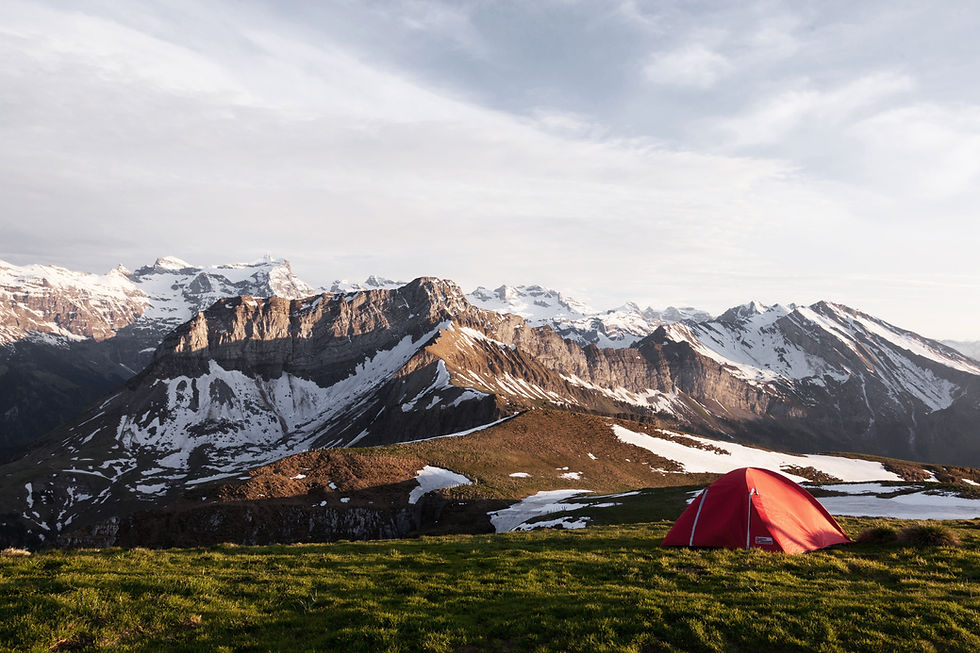Choosing a campsite… when you're so good at it, the deer use i

t...
There are so many considerations when choosing where to set up shelter. Purpose: what are you trying to accomplish? Are you camping, hiking, bush crafting, survival training, escape and evasion, or trekking? The goal is to provide yourself with a safe, secure site that covers the basics.
1. Wind- out of prevailing winds- not under widow makers- fire placement to either avoid smoking your shelter out or dissipating any smoke created (if you're trying not to be seen)- realizing cold air sinks, warm air rises-
2. Wood Available resources - dead dry wood for fire- wood for shelter creation (if not using artificial means)-heat reflectors- wood for tool and trap construction, batons, mallets, snares, traps, containers etc.

3. Weather- cognizant of sun rising, setting, overhead, (suns direction for drying out clothes, solar charging, cover from sun to reduce temperature, direct sun if colder to assist benefit heat retention to structure. Understanding the suns movement throughout the day can benefit many scenarios. Ex. If hunting game, the suns placement can make spotting game easier or harder... animals use the same principle and move within cover using the sun to hide in shade or make it harder to be seen. Understanding weather patterns where you are may dictate positioning of your shelter. (Some areas weather patterns are similar (rain in afternoon, storms come from certain directions.
Lay of the land Setting up in valleys typically is cooler at night. Setting up on ridges exposes you to more wind. Small depressions on hillsides may or may not be viable. Some are dry, some are wet spots (meaning this- during high humidity days, look at the horizon, you sometimes see fog banks starting in certain spots, these spots may have natural springs or a lot of vegetation that releases more moisture than other areas. Avoid these, being consistently damp, is harder to maintain core body temp).
Your shelter type should most definitely dictate your shelter location. For example, if you predominantly utilize a tarp for shelter. Your opening should face away from the wind or angled to prevent smoke entering. If you use bivy bags, depressions and water runoff are definitely not your friend. Flat or slope is important as well. Always keep your head slightly elevated. Tents need ground that accepts stakes. (For the most part)
When selecting your site try to keep an open mind and be cognizant of your surroundings.

Wiggly’s avoid setting up where there is an abundance of insects, bugs, snakes or other animals. Never set up on a trail. Game or manmade. (Nothing more discerning than a deer snorting at you all night) trust me it’s happened; he was pissed that I was in his way (we are interlopers in their home). If you set up on a creek bed or next to a pond, bet the coons will visit you during the night. ( I once woke up with four bandits staring at me, like waiting for me to make them breakfast).

Security In most areas I have utilized trip wires. It accomplishes several things. 1. Provides early warning detection for me. 2. Discourages animals from getting too close at night. 3. Be sure to only use non-lethal trip wires. (Our intent is to scare off animals or provide us with early detection of two legged interlopers. Note: some areas, trails, wilderness areas have a disproportionate amount of, how do I say it… not nice people. When setting up your perimeter, know exactly where they are, cover 360degrees, your trip wires should be set up in layers, both horizontally and vertically. There should be at least two egress areas that are not easily identifiable by two legged predators. If you have more than one person in your group, everyone must know where they are. some may say this is overkill, but the limited amount of weight and resources needed definitely is worth it. cans with pebbles, shotgun 209 primer devices are acceptable. Be very careful with anything larger that creates a flare or sparks due to fire concerns. Your goal is sound, noise… we aren’t in combat…act appropriately.
Available water nearby is another important issue. You don’t want to be too close, but not so far away that it takes half a day to gather water.
Stealth camping is all the rage now. To me stealth camping is just urban camping on somebody else’s property. Kind of pointless in my opinion. Have at it if that is your thing. But at least be aware that you are probably trespassing and if seen probably freaking somebody out, wondering wth you are doing. Juice ain’t worth the squeeze imho.
Overall, you want to be comfortable, out of the wind, protected from rain, sun and wildlife. Set yourself up to relax and enjoy nature… that’s why we do what we do! Ps look closely at this photo…. Comment if you see it! As always Keep your powder dry and your paddle wet! J

Comments